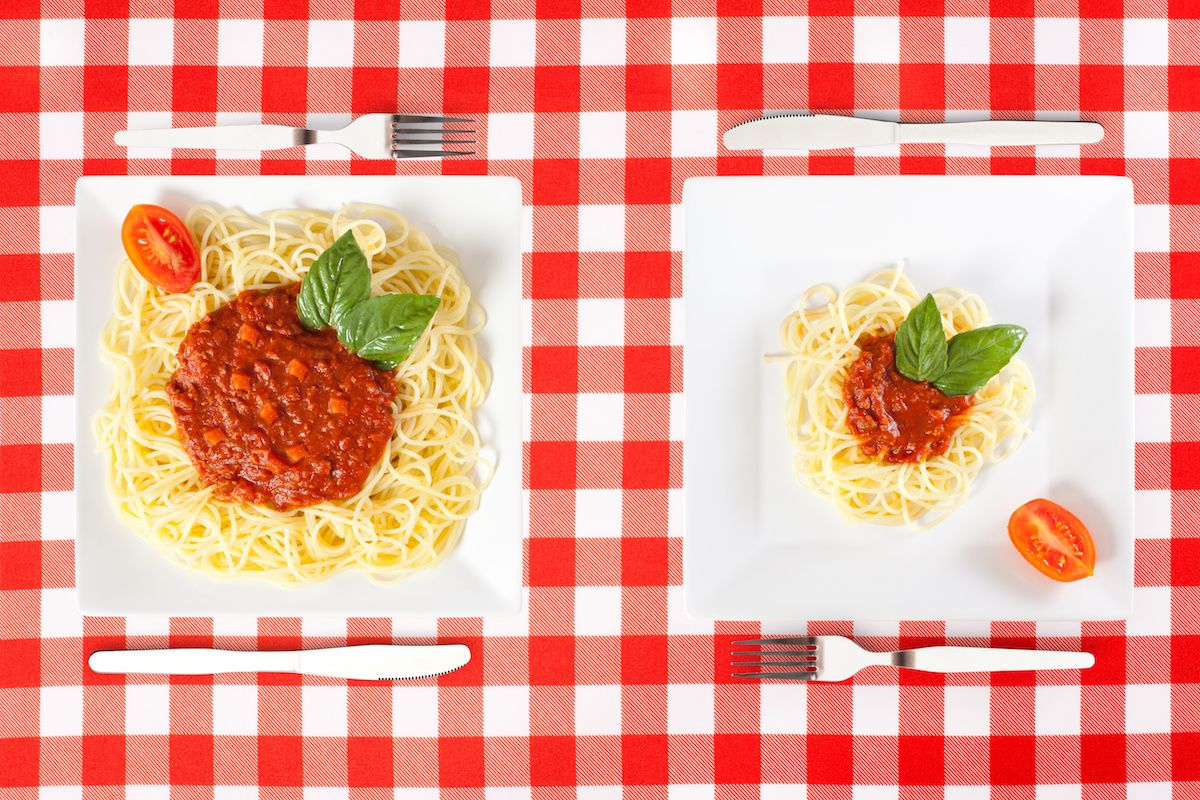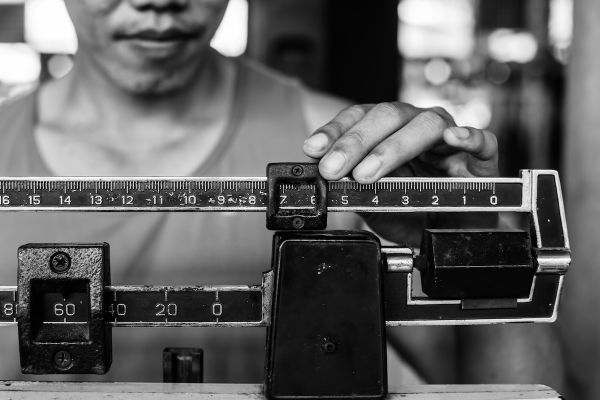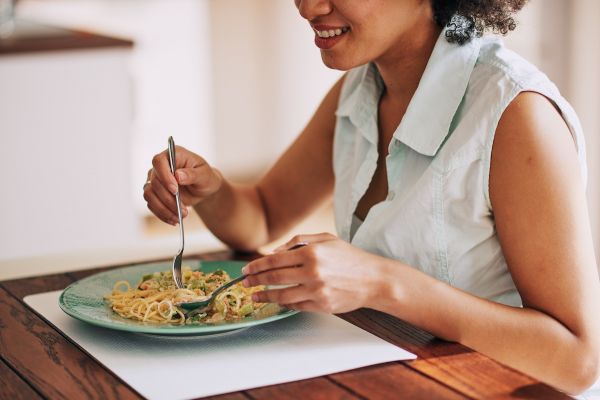We’ve all seen heaping portions of food put in front of us at restaurants and watched bottles and cups of soda get “super-sized.” Twenty years ago, it was common to be served one cup of pasta at a meal, while nowadays the average portion is two cups. And while soda used to be a treat that came in a 6.5-ounce bottle that provided 85 calories, the bottle you grab at the grocery store register today is 20 ounces and about 250 calories.
Calories are a measurement of the energy provided by food. Calories fuel your body throughout the day and even when you sleep! But extra calories can add up: Just 100 calories per day beyond your needs could lead to an extra 10 pounds of weight per year.
According to the American Institute for Cancer Research, aside from not smoking, maintaining a healthy weight is the single most important thing you can do to protect yourself from cancer. Balanced calorie intake — getting all the nutrients you need without too many calories — is one of the components of maintaining a healthy weight. Everyone’s calorie needs are different and depend on factors such as age, weight, activity level and personal goals. So when it comes to portion sizes, some people might need larger or multiple portions to meet their needs.
Eyes vs. Stomach
However, we often rely on environmental factors and visual cues — such as package size and plate size — to tell us how much to eat, instead of our own personal nutrition needs and hunger and fullness cues. Many studies have shown that adults and children consume more food from large packages and portions than from smaller ones. This has held true for everything from carrots to cookies! Without realizing that we’re doing it, we tend to alter the amount of food we eat based on how it is presented.
When this has been tested in studies, participants have usually eaten smaller amounts when food was served food on smaller plates and larger amounts when it was served on larger plates. However, participants in the studies have reported similar feelings of satiety (having eaten enough) regardless of how much they ate.
Strategies to Avoid Overeating
While many people grew up in the “clean plate club,” it’s important to recognize that you don’t have to finish all the food on your plate or in a package if you are not hungry. The habit of eating based on visual cues can be hard to break, so try changing the visual cue altogether by eating off of a smaller plate, packing up part of a meal at a restaurant as soon as it comes to the table, and dividing up the contents of a large package of food into smaller containers to help avoid overconsumption.
However, strategies like these may work only when you are not overly hungry. If you are really hungry, eating off a smaller plate or grabbing a “portion control” snack may not make a lot of difference in how much you end up eating in total, as you will be more likely to eat multiple small portions. When it comes to calories, portions or types of food, restrictions and limitations can leave us feeling less in control around food and can lead to more overeating later on.
Want more healthy eating tips?
Our Nutrition Department has lots of information to help you eat healthy.
Learn MoreTherefore, it’s important to stay hydrated and to nourish yourself with nutrient-dense foods — fruits, vegetables, whole grains, beans, nuts, seeds, seafood and lean meats — throughout the day so you’ll feel satisfied. Avoid skipping meals or “saving” calories for later, as this can increase the likelihood of binge-type eating.
Take steps to become more in tune with your hunger and fullness cues (our article on mindful eating is a good place to start), and try to avoid strict food rules!



